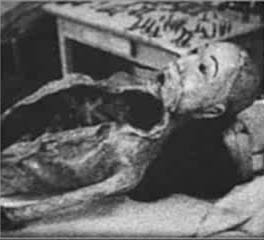
Robert E. Cornish (1903-63) was a Californian physician, academic and medical researcher, best known for his attempts to revive the dead.
Born in San Francisco, Cornish was the Doogie Howser of his day: he completed high school at age 15, graduated from Berkley three years later and was licensed to practice medicine in his 21st year. In his mid 20s, Cornish returned to Berkeley as a researcher where he worked on a number of projects, from reading glasses to the isolation of heavy water.
Cornish’s pet interest, however, was the resuscitation of human and animal cadavers after death, which he believed entirely possible. By 1933 he had developed an unusual method of reanimation. Cornish’s ‘patients’ were strapped to a large see-saw, injected with adrenaline and heparin to thin the blood, then vigorously “teetered” to restore circulation. He attempted this bizarre experiment on several bodies without luck, coming to the conclusion that too long had elapsed since death for it to work.
In May 1934 Cornish turned his attentions to freshly euthanised dogs. He acquired five fox terriers, each pithily named Lazarus, and conducted his experiment. Three of them stayed dead while two were successfully revived, though both were rendered blind and insensible.
“Dr Cornish, elated at the sensational success of his experiments with dogs, wants to make the attempt [on humans]. He is now seeking permission to experiment with a criminal executed by poison gas. Given the body after physicians declare the man to be dead, he would strap the body to a teeterboard and attach electrical heating pads to the limbs. Next a chemical known as methylene blue would be injected into the veins to neutralise the poisonous fumes that had caused death. Pure oxygen would then be pumped into the lungs through a mask and the teeterboard rocked slowly to keep the blood in circulation… Dr Cornish believes firmly that the dead man would live. He does not agree with other scientists that the brain of the man so revived would be hopelessly damaged.”
Thankfully, Cornish’s proposal was turned down by the state of California, and McMonigle was executed without “teetering” in February 1948. By the late 1950s Cornish had retired from medical research and was marketing his own product: “Dr Cornish’s Tooth Powder with Vitamin D and Fluoride”.
Source: “Can science raise the dead?” in Popular Science, February 1935. Content on this page is © Alpha History 2019-23. Content may not be republished without our express permission. For more information please refer to our Terms of Use or contact Alpha History.




